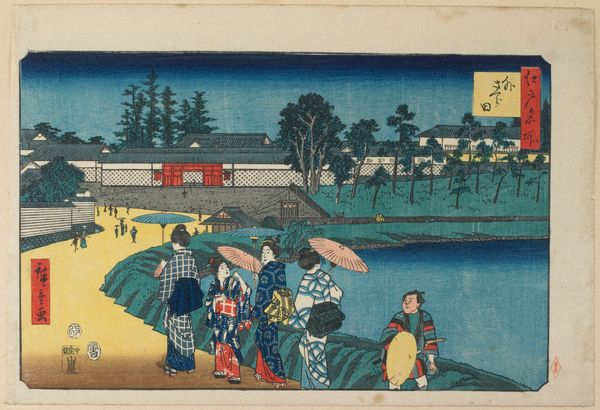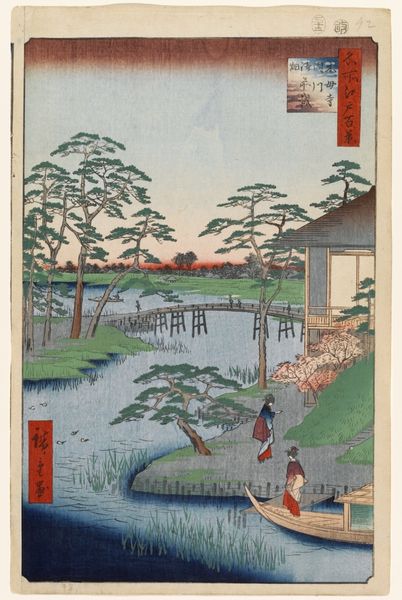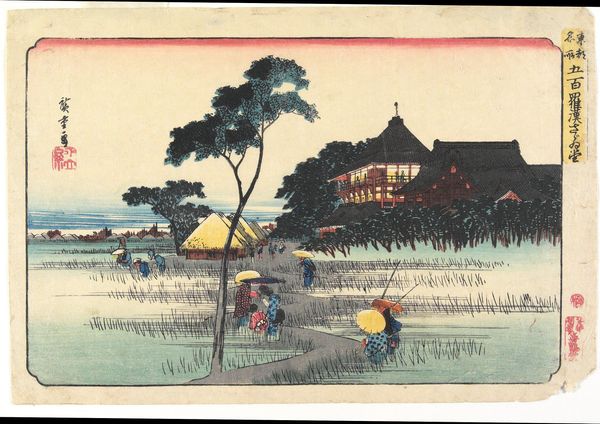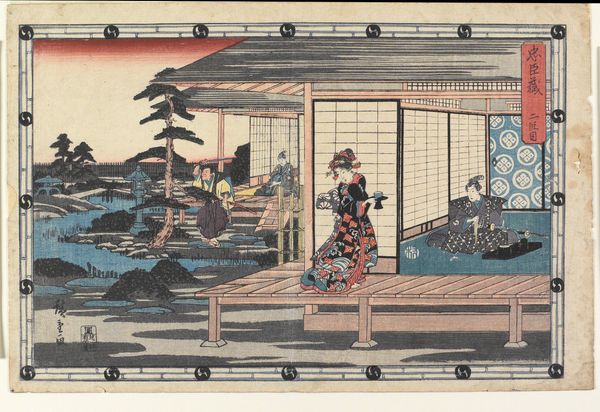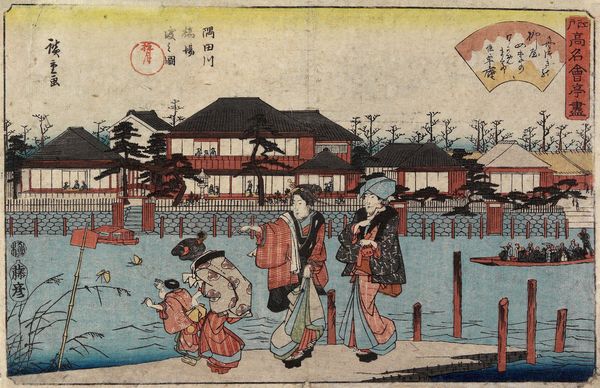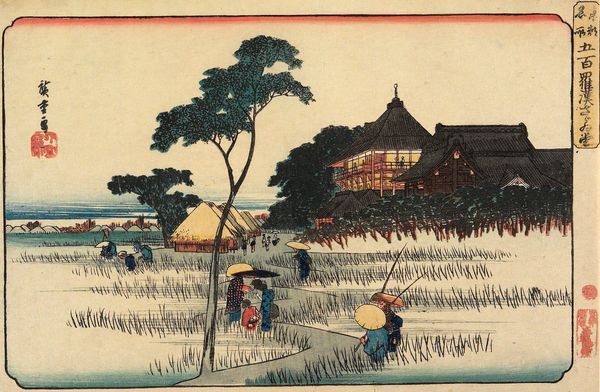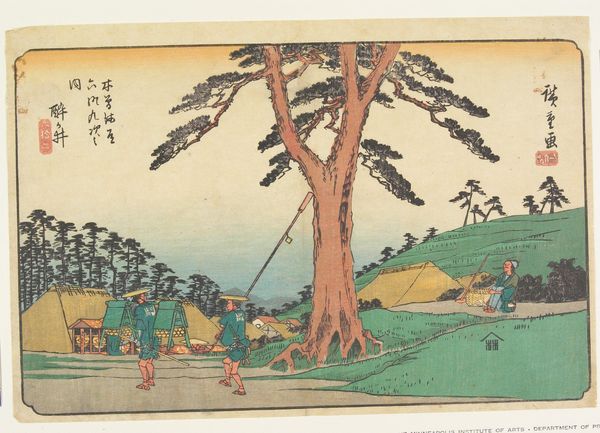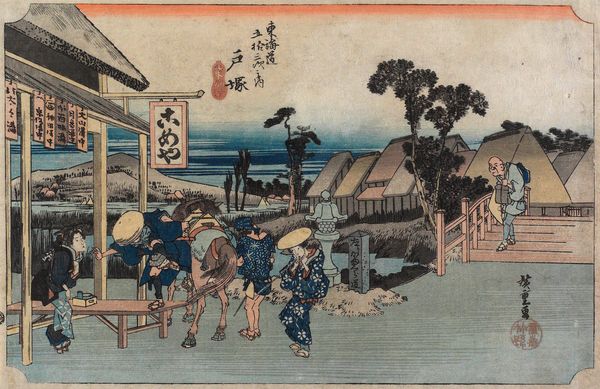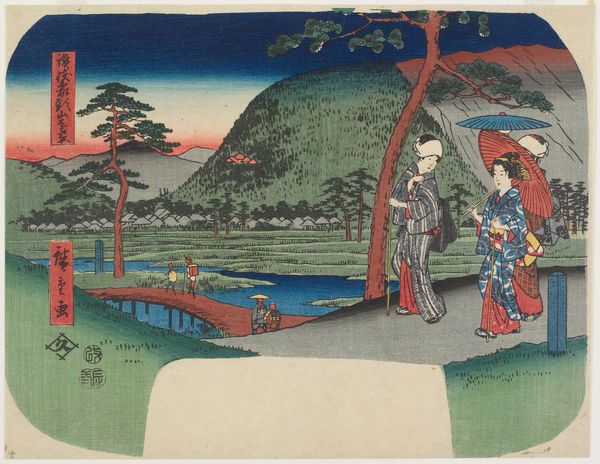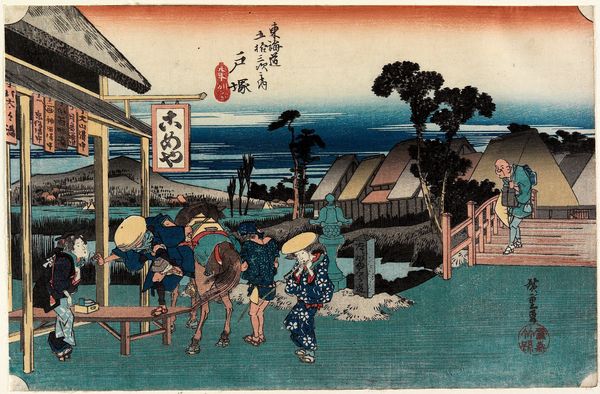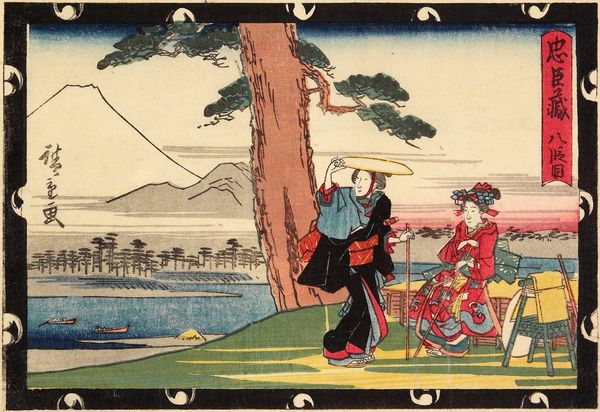
print, ink, color-on-paper
# print
#
asian-art
#
landscape
#
ukiyo-e
#
figuration
#
ink
#
color-on-paper
Dimensions: 8 7/8 × 13 11/16 in. (22.6 × 34.8 cm) (image, horizontal ōban)
Copyright: Public Domain
Editor: Here we have Hiroshige’s "Act IV," a color woodblock print made sometime between 1843 and 1847. It’s incredibly serene; a lone figure stands between us and what looks like a government building. What strikes you about it? Curator: What resonates for me is how Hiroshige positions the male figure. This is during the Edo period, and he's clearly a samurai, caught in a liminal space, both physically and perhaps ideologically. Think about the rigid social hierarchy of the time. What tensions might this image reveal about the individual versus the collective, especially concerning the role of the samurai within a rapidly changing society? Editor: So, his placement isn't just aesthetic; it speaks to a broader cultural struggle? Curator: Precisely. The very genre of Ukiyo-e prints was a commentary on contemporary life, often subtly critiquing the status quo. Look at the meticulously rendered landscape against the figure. Who does that benefit? How does it reflect or subvert the power structures? Are the detailed landscapes really ‘neutral’ when figures and buildings coexist like this? Editor: It’s fascinating to think about landscape itself having a political voice. Curator: Indeed. And Ukiyo-e prints, though seemingly depicting "everyday life," acted as powerful vehicles for social commentary. The way identities were constructed and consumed through these images really influenced societal perceptions. Who gets visibility? Whose story gets told? That's something this print prompts me to question. Editor: I never considered it from that angle! Now I see the print as less of a serene scene and more as a statement about social expectations. Curator: Right? Art often holds up a mirror to the society that created it, inviting us to reflect on power, identity, and representation. This has been a valuable insight for me, thank you!
Comments
No comments
Be the first to comment and join the conversation on the ultimate creative platform.
